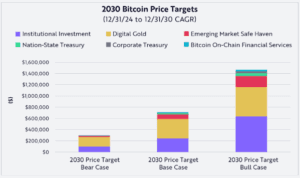
US GDP Contraction Adjusted to 0.2% While Bitcoin Remains Stable
The initial report from the Bureau of Economic Analysis indicated that the U.S. economy experienced a contraction at an annual rate of 0.2% in the first quarter, based on a revised estimate released recently.
Following this information, Bitcoin saw a minor dip of 0.4%, yet it continues to maintain a strong position above $108,000.
Final sales, adjusted for inflation, declined by 2.9% as consumer spending moderated to a growth rate of 1.2%. While purchasing of goods dwindled, services managed to keep overall figures from falling more dramatically. Additionally, imports influenced by tariffs reduced the gross domestic product by nearly 1.5 percentage points, according to the findings.
Corporate profits decreased by 3.6%, marking the end of a two-year growth phase. Investments in equipment and structures remained largely unchanged, indicating that companies are becoming more cautious with their cash flow.
Data from the Labor Department revealed that initial jobless claims totaled 240,000 for the week ending May 24, while ongoing claims rose to 1.919 million. These numbers suggest a slow reduction in hiring trends without a widespread increase in layoffs.
Price measures accelerated, despite a slowdown in economic activity. The GDP price index increased by 3.7%, and core personal consumption expenditures prices saw a rise of 3.4%, both figures remaining above the Federal Reserve’s target of 2%.
This combination of reduced economic output and persistent inflation constrains policymakers’ ability to implement rate cuts. Futures markets are still reflecting a long-standing monetary policy stance until clearer signs of labor market easing and decreased prices are observed.
Overall health: Weakening. Economic output has declined, demand has sharply decreased, profits are down, and jobless claims are on the rise.
Inflation backdrop: Inflation remains too high. Price indicators have risen further above the Fed’s target, limiting the potential for immediate rate reductions.
Policy implication: The Federal Reserve is likely to maintain its “higher for longer” policy until it observes both a decrease in inflation and clearer signals of labor market slack.
Forward look: Current high-frequency data (with the Atlanta Fed GDPNow estimating a 2.2% for Q2) suggests a slight recovery may be ahead, though this estimate has been declining. Continued weak consumer spending and reduced profits could indicate that this contraction is a beginning of a more extended slowdown rather than a brief interruption.


















Post Comment